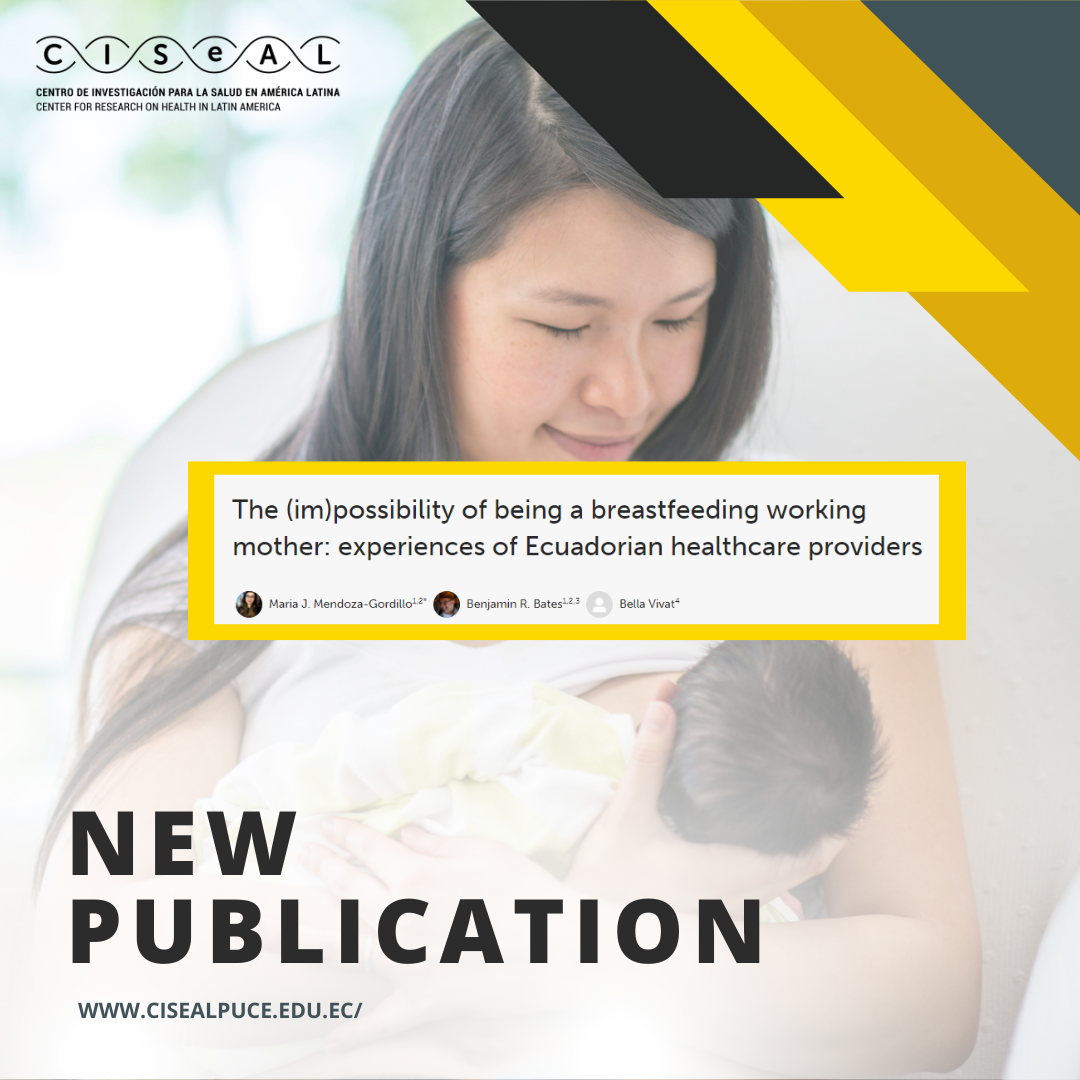 Breastfeeding has long been acknowledged as the optimal choice for infant nutrition by public health agencies and healthcare experts worldwide. In line with international guidelines, the Ecuadorian government has implemented laws and initiatives to promote breastfeeding, especially among working mothers. Despite these efforts, breastfeeding rates in Ecuador remain low. Our researcher María José Mendoza delves into a qualitative study conducted among 60 healthcare professionals in Ecuador who are also mothers. These nurses, physicians, and nutritionists shared their experiences with breastfeeding while managing their demanding careers.
Breastfeeding has long been acknowledged as the optimal choice for infant nutrition by public health agencies and healthcare experts worldwide. In line with international guidelines, the Ecuadorian government has implemented laws and initiatives to promote breastfeeding, especially among working mothers. Despite these efforts, breastfeeding rates in Ecuador remain low. Our researcher María José Mendoza delves into a qualitative study conducted among 60 healthcare professionals in Ecuador who are also mothers. These nurses, physicians, and nutritionists shared their experiences with breastfeeding while managing their demanding careers.
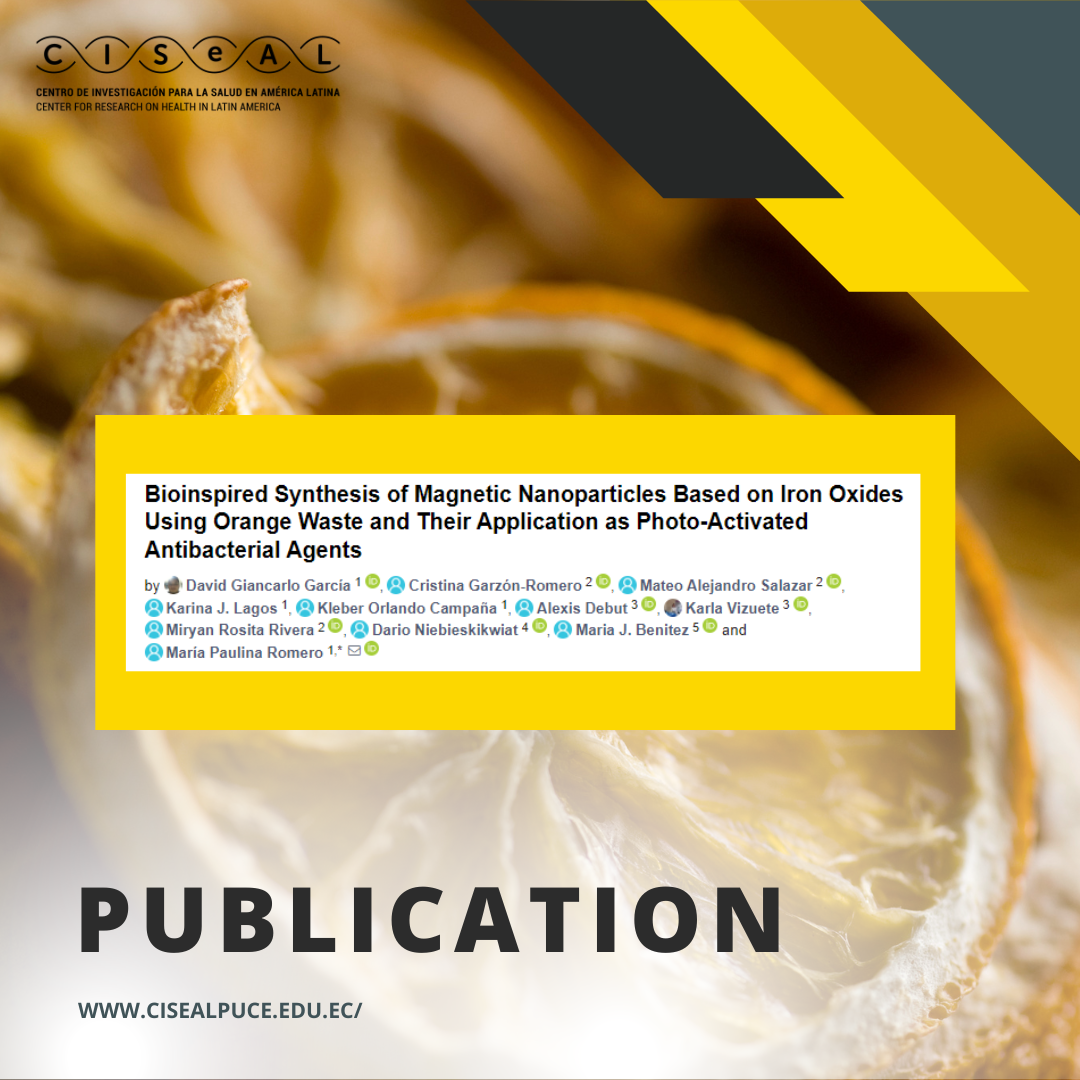
In the study carried out by our researcher Miryan Rivera, an ecological method was developed to manufacture magnetic nanoparticles based on iron oxides (MNPs-Fe), using orange waste. These nanoparticles, proposed as photothermal agents (PTAs) in antibacterial photothermal therapy (PTT), offer a promising solution to a widespread health challenge.
The study introduces a rapid and environmentally friendly green synthesis (GS) method to produce MNPs-Fe from orange waste. Orange peel extract, rich in organic compounds, serves as a multifunctional agent for reduction, capping, and stabilization in the GS process, which is accelerated by microwave (MW) irradiation.
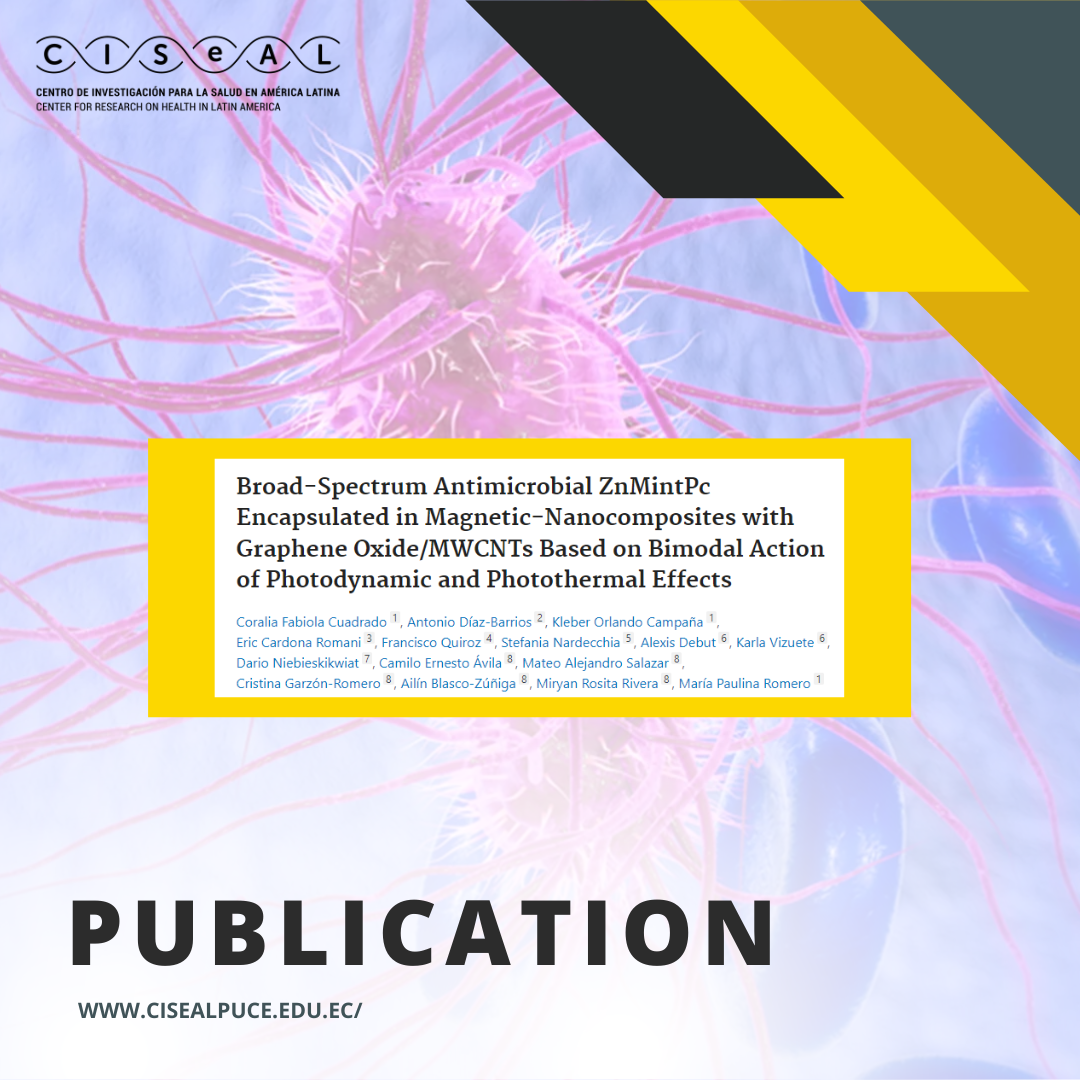
In recent years, microbial diseases have been declared one of the main threats to humanity, which has generated significant interest in the development of nanocomposites with antimicrobial capabilities. The study conducted by our researcher Miryan Rosita Rivera, in collaboration with the Escuela Politécnica Nacional (EPN), focused on two magnetic nanocomposites based on graphene oxide (GO) and multiwall carbon nanotubes (MWCNTs). The synthesis of these magnetic nanocomposites consisted of three phases: firstly, the synthesis of iron magnetic nanoparticles (MNPs); secondly, the adsorption of the photosensitizer menthol-zinc phthalocyanine (ZnMintPc) onto MWCNTs and GO; and the third phase involved encapsulation in a biocompatible poly (N-vinylcaprolactam-co-poly(ethylene glycol diacrylate)) (VCL-co-PEGDA) polymer hydrogel to obtain the magnetic nanocomposites VCL/PEGDA-MNPs-MWCNTs-ZnMintPc and VCL/PEGDA-MNPs-GO-ZnMintPc.

In the facilities of the Center for Research in Nanotechnology and Photonic Therapies (CiSeAL), an exciting collaboration is taking place between the Research Laboratory of Cytogenetics and Biomolecules of Amphibians (LICBA) of PUCE and the students and professors from the Masters in Materials program at the National Polytechnic School (EPN). This joint study is shedding light on innovative alternatives in cancer treatment, led by the renowned Dr. Paulina Romero, a faculty member of the Materials Department at the Faculty of Mechanical Engineering at EPN.
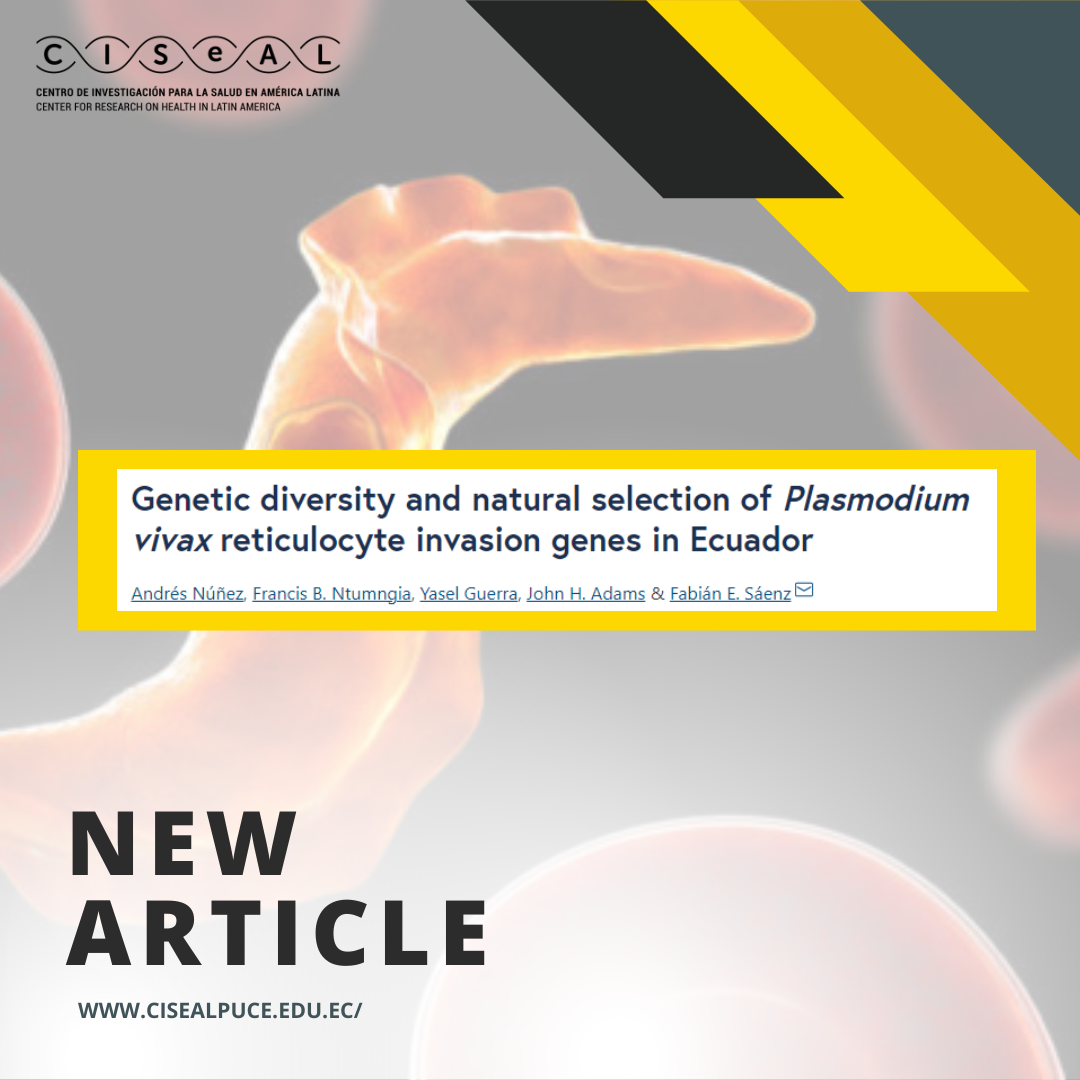
Malaria remains a global health challenge, with staggering statistics of approximately 247 million cases and 619,000 deaths reported in 2021. Plasmodium vivax is the predominant parasite in the Americas, particularly the Southern hemisphere, accounting for 64% of all malaria cases. Ecuador has made significant strides in malaria control, witnessing a remarkable 99% reduction in diagnosed prevalence over the past 15 years. In the article written by our researcher Fabián Sáenz and his colaborator: "Genetic diversity and natural selection of Plasmodium vivax reticulocyte invasion genes in Ecuador", it was discovered that while periodic outbreaks occur in coastal and perennial transmission in the Amazon, the disease mainly affects working-age men in rural areas.
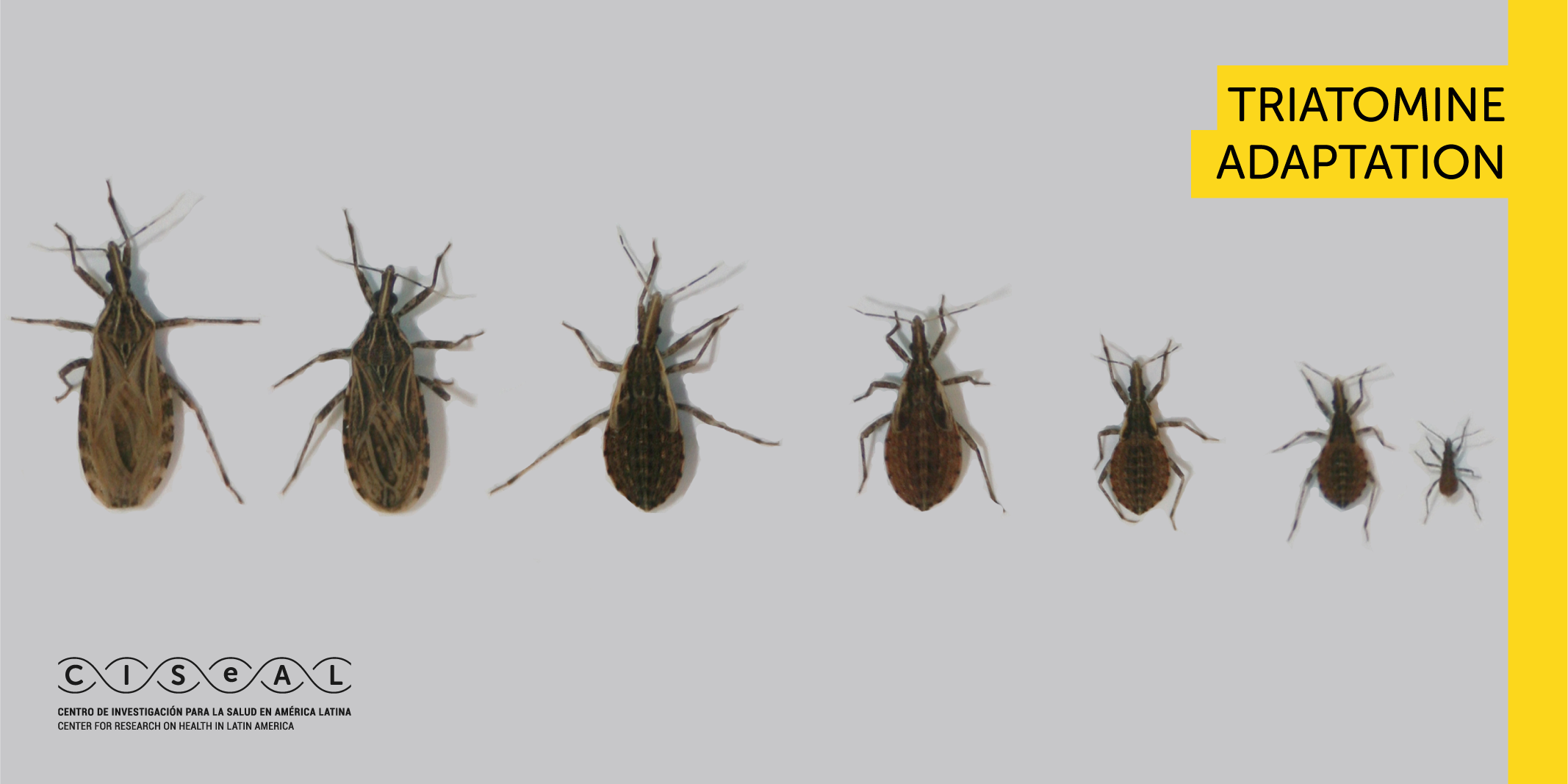
Rhodnius ecuadoriensis collection, available at CISeAL's Insectarium. Credit: Dra. Anita Villacís.
In a first attempt to understand the genomic basis of triatomine adaptation, researchers from Glasgow University and CISeAL - PUCE identified genomic regions that are possibly linked to Chagas disease vectors' adaptation to the built environment.
May 2021
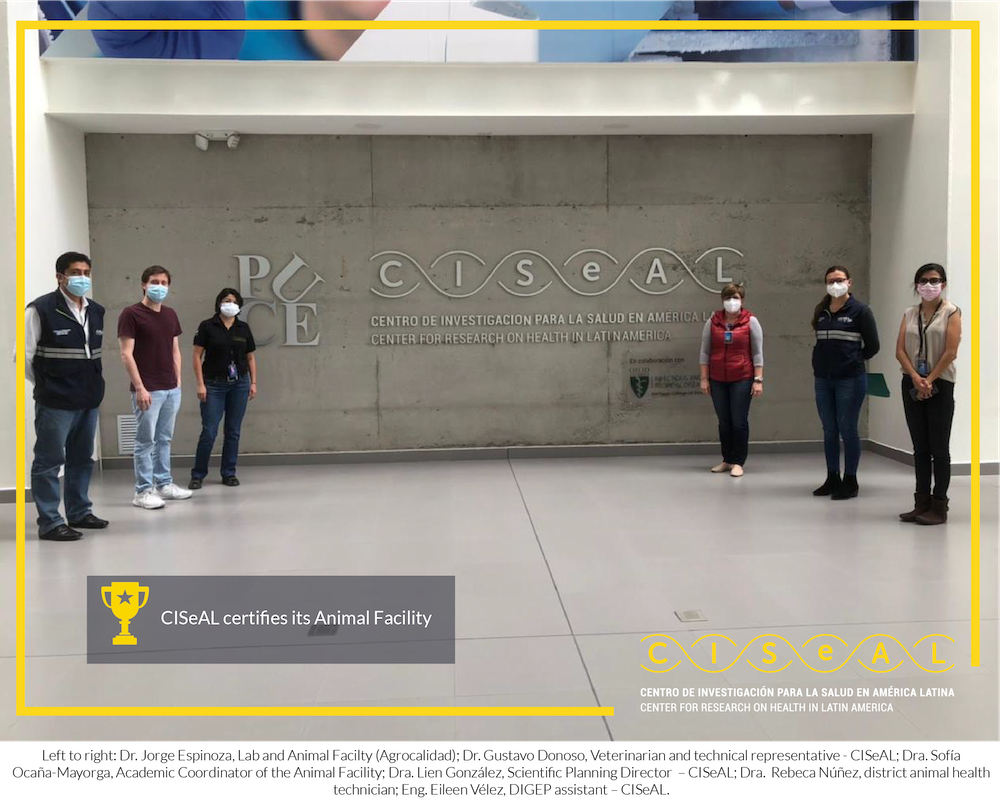
The Center for Research on Health in Latin America (CISeAL) of the Pontificia Universidad Católica del Ecuador (PUCE) is delighted to share with the scientific community that our Animal Facility (AF) obtained its certification as a quarantine facility by the Agencia de Regulación y Control Fito y Zoosanitario – AGROCALIDAD (national authority in charge of phytosanitary and xoosanitary control).



